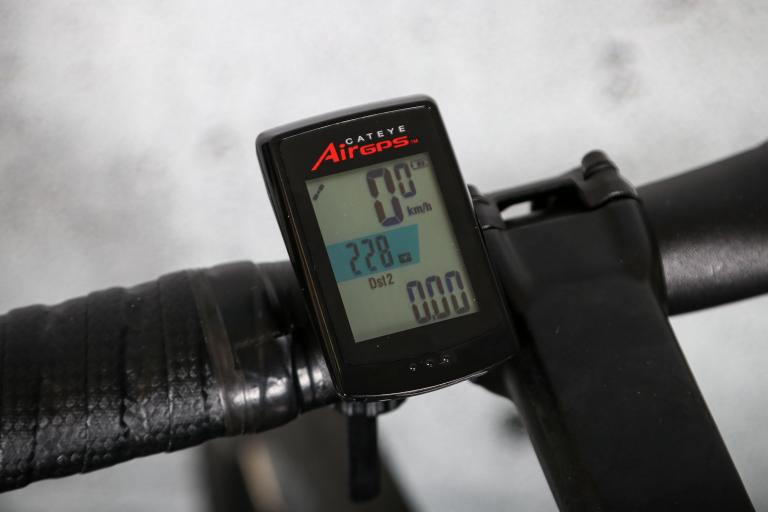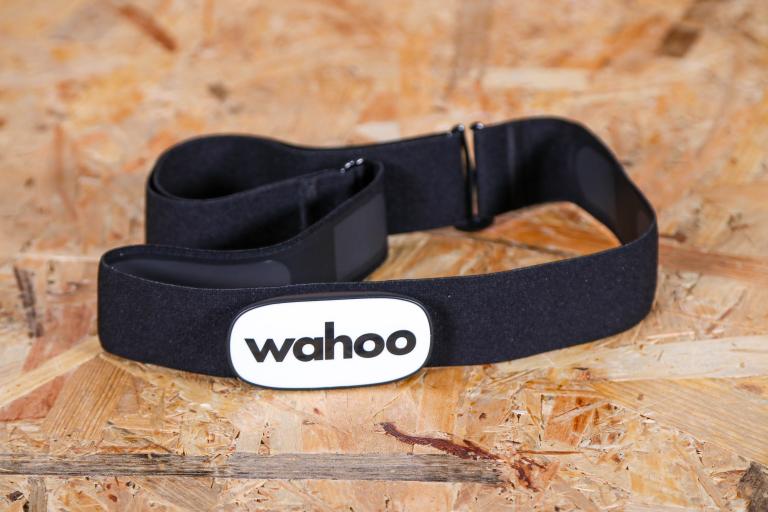- News
- Reviews
- Bikes
- Accessories
- Accessories - misc
- Computer mounts
- Bags
- Bar ends
- Bike bags & cases
- Bottle cages
- Bottles
- Cameras
- Car racks
- Child seats
- Computers
- Glasses
- GPS units
- Helmets
- Lights - front
- Lights - rear
- Lights - sets
- Locks
- Mirrors
- Mudguards
- Racks
- Pumps & CO2 inflators
- Puncture kits
- Reflectives
- Smart watches
- Stands and racks
- Trailers
- Clothing
- Components
- Bar tape & grips
- Bottom brackets
- Brake & gear cables
- Brake & STI levers
- Brake pads & spares
- Brakes
- Cassettes & freewheels
- Chains
- Chainsets & chainrings
- Derailleurs - front
- Derailleurs - rear
- Forks
- Gear levers & shifters
- Groupsets
- Handlebars & extensions
- Headsets
- Hubs
- Inner tubes
- Pedals
- Quick releases & skewers
- Saddles
- Seatposts
- Stems
- Wheels
- Tyres
- Health, fitness and nutrition
- Tools and workshop
- Miscellaneous
- Tubeless valves
- Buyers Guides
- Features
- Forum
- Recommends
- Podcast
review
 Polar CS200 computer
Polar CS200 computer£134.50
VERDICT:
Capable computer with cadence and heart rate functions and Polar's web resource to help you get the maximum out of it
Weight:
125g
Contact:
www.polar.fi
At road.cc every product is thoroughly tested for as long as it takes to get a proper insight into how well it works. Our reviewers are experienced cyclists that we trust to be objective. While we strive to ensure that opinions expressed are backed up by facts, reviews are by their nature an informed opinion, not a definitive verdict. We don't intentionally try to break anything (except locks) but we do try to look for weak points in any design. The overall score is not just an average of the other scores: it reflects both a product's function and value – with value determined by how a product compares with items of similar spec, quality, and price.
What the road.cc scores meanGood scores are more common than bad, because fortunately good products are more common than bad.
- Exceptional
- Excellent
- Very Good
- Good
- Quite good
- Average
- Not so good
- Poor
- Bad
- Appalling
Polar's neat, and snappily named, CS200cad computer gives you your heart rate and cadence information alongside speed and distance measurements and it's all saved in files that are uploadable to Polar's online training diary if you have the right hardware.
Setting up the CS200 is easy. I've used Polar products loads in the past so maybe I've got used to the way they do things, but I can't imagine anyone would struggle too much. Both the speed sensor and the cadence sensor are wirelessly linked to the head unit so you don't need to worry about routing any wires.
You zip-tie the sensors onto your frame and fork, and attach the magnets to a spoke and the crank arm so that they pass within 4mm of the sensors to register. One thing you might think odd is that you can't change the battery in either the speed or cadence sensor, although Polar reckon each will last for years.
The spoke magnet will fit the vast majority of spokes, even aero ones, although there's a chance you might need to get yourself another magnet if your spokes have a really unusual profile. Once set up, I've not had any problems with interruption to the signal. It can happen under power lines and at traffic lights but I've not had any of that and a whole bunch of different bike lights haven't had any effect on it either.
Mounting the head unit to your bars or stem is equally simple. Again, you just zip-tie the mount in place and twist the computer on. It could hardly be easier and it's perfectly secure. Removing it is just as easy - it takes a second.
Okay, so you input your wheel size, your age, weight and so on and hit the road: what does the computer tell you? Well, you get four different screens with quite a bit of information on each. One display, for example, gives you your current speed, your heart rate, your cadence, and the distance you've ridden. You also get your speed and heart rate displayed graphically - little dots giving an indication of your current status.
Other readouts you might find useful include a stopwatch, lap timer, your average speed and a calorie counter (that one's always going to be pretty rough). You just press a button on the front of the computer to switch between the various displays. It's easy enough to use even with gloved fingers. Or you can set the computer to cycle through the screens automatically, although you can't customize the information given on each screen - you get what you're given.
The reason you'd buy the CS200 over a cheaper computer is for the heart rate functions. Say you wanted to ride at a heart rate of 130-140 beats per minute in your training session: you input those figures before you start and as well as your current heart rate, the computer gives you a little graphic that shows where you are in that band. Wander outside your band and an alarm will go off (if you set it) so you can get back on track.
You can set just one heart rate band rather than several. There are two timers, though, that you can run consecutively to structure interval sessions. So you could set a 10min work period followed by a 5min rest period, for example, with beeps that alert you at the start of each. The only thing is, if you have the alarm set to tell you when you stray outside your heart rate band, it'll sound constantly through your rest period so you have to put up with it or switch it off entirely.
Once you stop, you can check through the data on the screen. It's all recorded in separate files (you can keep a maximum of seven at any time) and you soon get the idea of how it works. It'll give you lap times (if you used that function), your average and max speed, cadence and heart rate, how long you spent exercising in your training zone... Basically, you get a pretty full review of what you were doing during different sections of your ride.
You can also upload the files on to the Polar Personal Trainer website www.polarpersonaltrainer.com where it's stored for you to check over. To do that you need to download the free Polar WebLink software to a PC that has a sound card and microphone. It's not supported for Mac, though - which seems nuts in this day and age, but there you go. The website is a valuable addition if you're likely to make use of it. You get training articles, programmes, and even a Training Load indicator that recommends when you're ready to train and when you shouldn't.
So, this is a good computer. I've got on really well with it. I find the cadence function useful and Polar's Personal Trainer website helps you get the most out of the heart rate information. £135 is a lot to spend on a bike computer but that's still much cheaper than a GPS computer with a heart rate function like the Garmin Edge 500, and if you're going to make use of Polar's web resource too, it's decent value for money. It's also got to be said that is you shop around you can find it online for significantly less than list price.
Verdict
Capable computer with cadence and heart rate functions and Polar's web resource to help you get the maximum out of it
road.cc test report
Make and model: Polar CS200cad Cycling Computer
Size tested: Silver
Tell us what the product is for, and who it's aimed at. What do the manufacturers say about it? How does that compare to your own feelings about it?
Polar say, "For goal-oriented cyclists who want more out of their training and performance."
Seems a reasonable description to me.
Rate the product for quality of construction:
9/10
It's really well put together, attractive, solid, and it's water resistant.
Rate the product for performance:
8/10
It puts in a solid performance with no real worries. The Polar website is a useful resource and adds to the overall performance.
Rate the product for durability:
8/10
Fine. It'll scratch like any other bike computer, but it's reasonably robust.
Rate the product for weight, if applicable:
8/10
Not an issue either way. Whether it's 20g more or less heavy than any other bike computer really isn't that relevant.
Rate the product for value:
7/10
Depends how you look at it. In itself, it's not exceptional value for money. Add in the Polar web resource -if you're going to use that -and it's much more attractive.
Tell us how the product performed overall when used for its designed purpose
Really well. I like it a lot. Intuitive to use. Cool.
Tell us what you particularly liked about the product
Easy to set up and simple to use.
Tell us what you particularly disliked about the product
I'd have liked another 1 or 2 heart rate zones. I have this on a couple of Polar wrist mounted HRMs and find it a really useful feature for interval training.
Did you enjoy using the product? Yep
Would you consider buying the product? I'd probably pay more and go up to a GPS-enabled computer now
Would you recommend the product to a friend? Yes, if they were looking for something around this price
About the tester
Age: 40 Height: 190cm Weight: 74kg
I usually ride: My best bike is:
I've been riding for: Over 20 years I ride: Most days I would class myself as: Expert
I regularly do the following types of riding: time trialling, commuting, sportives, general fitness riding,
Mat has been in cycling media since 1996, on titles including BikeRadar, Total Bike, Total Mountain Bike, What Mountain Bike and Mountain Biking UK, and he has been editor of 220 Triathlon and Cycling Plus. Mat has been road.cc technical editor for over a decade, testing bikes, fettling the latest kit, and trying out the most up-to-the-minute clothing. He has won his category in Ironman UK 70.3 and finished on the podium in both marathons he has run. Mat is a Cambridge graduate who did a post-grad in magazine journalism, and he is a winner of the Cycling Media Award for Specialist Online Writer. Now over 50, he's riding road and gravel bikes most days for fun and fitness rather than training for competitions.




Here is a formula working out the cost of cycling on an individual level....
That is nowhere near 90 degrees.
No idea if Cancellara was using a motor or not, I hope not as I greatly enjoyed him as a rider, but the tech was certainly available, I can...
Fair enough:...
Centaur groupset. WDIW?
Usual ugly Pinarello, bumps and curves where they aren't needed. And, according to Mapdec, not well built.
That's not strictly true - Reform will legalise immigrant baiting, trans bashing and tar and feathering of anyone woke. Loads of fun for all the...
What's a "legitimate cyclist" please? Someone who doesn't conform to your arbitrary norms? At the age of 56 I admit that you have 13 years more...
This risks turning me into a hanger and flogger....
I had the pleasure of owning two of the featured builders here, in my history. When I joined the Army in 1971, I took with me my curly Hetchins:...